It’s a Long Road |
| Posted by admin | |
| Thursday, 27 August 2009 11:18 | |

It was not until Samy Vellu’s inadvertent revelation in Parliament that it
was known that the four trustees of Hatibudi Sdn Bhd were (drum roll
please) Mahathir Mohamad (PM), Ghaffar Baba (DPM), Daim
Zainuddin (Finance Minister) and Sanusi Junid (Agricultural Minister
and UMNO Secretary General).
By Hakim Joe
|
From Malaysia Today
Comments by Sarawak Headhunter in red.
Would anyone sensible award a multi-billion Ringgit mega-contract for the building of a 512 kilometer highway to an engineering cum construction firm that has zero experience in the construction of highways and has never built an inch of it?
This was all part of the Grand Scheme, masterminded by none other than Daim Zainuddin, to keep Mahathir and UMNO in power through sheer money power. By the end of the 90's no less than RM25 billion of the government's and public money had been siphoned out through the highway-owning company - UEM - and its group of associated companies under Renong Bhd. It was sensible to them because they could do all this with impunity and get the Malaysian public to pay for everything.
Would anyone sensible choose this company over two other local companies that had bids lower than “the chosen one”?
It obviously made sense to them and it certainly helped to keep Mahathir in power for 22 years. In Malaysia, UMNo and its cronies cannot make money with lower bids. The higher the bids the more money UMNo and its cronies make.
Would anyone sensible choose a company that has such a poor record (of other constructions like the infamous collapse of the Northam Court in Penang) that it was suspended by the KLSE and had accumulated RM90 million in operating losses between 1981 and 1985 over two financially sound companies?
With a concession like this it would be more than financially sound and it should have been. Nevertheless it was a sensible thing for them to do because they could and did gain control over UEM as a vehicle that was cheap and could reap maximum benefits for them through its corporate reorganization and restructuring, especially with a multi-billion Ringgit contract.
Would anyone sensible award this mega-contract to a company that is almost insolvent (stocks suspended at 30 sen) that the body that is awarding the contract also needs to provide part of the capital, stand guarantee for the remaining commercial loans that are taken and provide a written guarantee of profitability when the other two competing companies did not seek such extreme financial assurances?
Given that UMNo itself, especially those who were in control of UMNo, was/were the ultimate beneneficiaries, such a highly biased award would have been seen as a total conflict of interest and the greatest form of corruption. To the government at the time it was sensible because it was meant to provide the finances to keep Mahathir in power within UMNO and his regime and supposedly the Malays in power over the country.
Would anyone sensible award this mega-contract to a company and then grant them “Pioneer Status” so that this company will be exempted from taxes for the next 10 years?
This was all done to maximise the amounts that could be siphoned out of the company at the expense of the government, the investing, tax-paying and toll-paying public.
Well this someone did all the insensible things above. Not only was the multi-billion Ringgit highway mega-contract awarded to this “zero-experience highway builder” over other experienced highway builders, this someone also had to cough out the initial “almost-interest-free” capital plus stand as guarantor over the massive billion Ringgit loans this “KLSE suspended public company” would have to take in order to complete this mega-project. Additionally, this someone also had to provide written guarantees that the “poor-record-construction-company” would not lose one sen in this venture. To cap it all off, this company is exempted from taxes for the next ten years and the proposed 25 years concession period is extended to 30 years.
Let’s start from the beginning.
In the beginning, there was Daim Zainuddin, and Daim Zainuddin was greedy. He saw his chance to make a lot of money by helping Mahathir Mohamad rise into power in UMNO and Malaysia and stay at the top for a long time.
He was so helpful that he was even made Minister of Finance, all the better to control all financial affairs of state for the benefit of UMNO, its members, Mahathir and cronies and himself of course.
In February 1986 the Ministry of Public Works launched a tender exercise for privatizing the construction and operation of the remaining portion of the North-South Highway (NSH). The 867 kilometer NSH was about 41% completed by the Malaysian Highway Authority (MHA) then. Five out of the six pre-qualified companies showed interest, namely Pilecon Engineering Berhad, United Engineers Malaysia Sdn Bhd, Shahpadu Holding Sdn Bhd, Unico Holdings Sdn Bhd and Pembinaan Hasbuddin (M) Sdn Bhd. Of these five companies, only Pilecon and Hashbuddin had the necessary experience building highways and only Pilecon and UEM submitted “conforming bids”. (MBF Holdings Sdn Bhd showed no interest at all.)
The question is why was the construction of the NSH being privatized when almost 41% of it had already been completed by MHA. What was an additional 512 kilometers of highway after building 355 kilometers? The Government’s answers to these questions were (1) It is aimed at relieving the financial and administrative burden of the Government in undertaking and maintaining a vast and constantly expanding network of services and investments in infrastructure; (2) Privatization is expected to promote competition, improve efficiency and increase the productivity of the services; (3) Privatization, by stimulating private entrepreneurship and investment, is expected to accelerate the rate of growth of the economy; (4) Privatization is expected to assist in reducing the size and presence of the public sector and its monopolistic tendencies and bureaucratic support in the economy; and (5) Privatization is also expected to contribute towards meeting the objectives of the New Economic Policy (NEP).
Yes, they had all the answers and justifications ready, and the giant umbrella which covered all their schemes and gave "legitimacy" and political clout to all the Great Robberies which these UMNO Malays carried out (many in cahoots with the BN Chinese and Indians), was the NEP. And they had no qualms about abusing all arms and agencies of government and trampling on everyone else's real legitimate rights to get their way.
The ensuing massive corruption and siphoning off of public funds was of no consequence to them, in the name of "Malay rights", which gave them all the justification and legitimisation they needed for all their wrongdoings.
And the mastermind was the Greatest Malaysian Robber Baron, Daim Zainuddin, Malaysian Public Enemy No. 1.
Of the five bids, only 3 were considered. Pilecon submitted 4 alternative proposals ranging from RM3.372 billion to RM3.76 billion. Hashbuddin submitted various alternative proposals with a standard tender of RM3 billion. UEM also submitted various proposals but had the highest bid of RM3.5 billion. Additionally, Pilecon’s tender also only specified a requirement of a RM498 million standby credit from the Government while Hashbuddin needed the Government to provide loan support (to its commercial loans). UEM needed RM1.65 billion from the Government. Pilecon proposed a 7 sen/km toll rate for a concession period of 25 years. Hashbuddin proposed a 5 sen/km toll rate for a concession period of 22 years and UEM once again came in highest at 7.5sen/km toll rate for a concession period of 25 years (extended to 30 years after the contract has been awarded.)
If conforming bids were mandatory, only Pilecon and UEM can be considered and Pilecon would win the tender owing to its lower bid, its proven experience at building highways plus the fact that the company only required a RM498 million standby credit facility from the Government.
If conforming bids were not considered mandatory, Hashbuddin would win this tender hands down. One, the company was an experienced highway builder. Two, its bid was the lowest at RM3 billion. Three, the company did not require any money from the Government, it merely required the Government to provide loan support to its commercial loan application(s) and lastly, its proposal for the collection of toll is the lowest at 5 sen per kilometer and the shortest concession period of 22 years only. In fact Hashbuddin also submitted the lowest estimated toll collection at RM17.9 billion. (Pilecon estimated it at between RM18 billion to RM19 billion and UEM’s figures were a whopping RM34 billion.)
On 8 July 1987, Samy Vellu tabled the Federal Roads (Private Management) Amendment Bill, and the Highway Authority Malaysia (Incorporation) Amendment Bill in Parliament to enable the government to privatize the NSH of which was awarded to UEM ahead of Pilecon and Hashbuddin. The total contract was worth RM3.5 billion.
When one studies the conditions imposed upon the Government by the contractor, it exhibits a parody of sorts whereby it is akin to a beggar enforcing strict rules and regulations upon a rich man that has offered him a high-paying job. UEM asked practically everything (including the kitchen sink and more) from the Government in order to cover all possible risks in the NSH project and yet the Government proceeded to award the NSH project to UEM.
One, UEM did not have to lay one single sen into the RM3.5 billion project. The UEM award was based on a pre-completion government loan of RM750 million to be drawn down during the construction period and a post-completion government loan of RM950 million (reduced to RM900 million) to be drawn down during the operation phase of the project. Furthermore, UEM also wanted the interest rate on both these huge government loans to be floating at an interest rate set at the rate of inflation (this means that UEM will pay no interest to the Government if the inflation rate is zero) which the Government eventually denied after protests from DAP in Parliament.
Additionally, UEM wanted an External Risk Undertaking (or commonly called a Guarantee) from the Government, to cover costs arising from adverse foreign exchange movements on its external debt, adverse interest rate movement, adverse changes in taxation, delays in completion due to factors outside its control, and cost overruns due to changes in Government Policy, and that this External Risk Guarantee was to be supported by a revolving loan facility whereby UEM could make drawings from the Government in order to cover any costs caused by external risks. (The External Risk Guarantee was rejected by the Government after once again being protested by DAP in Parliament but the revolving loan facility of RM500 million was approved.)
If one thought that these demands were unreasonable, wait, there were more. UEM also asked for a Traffic Volume Undertaking (Guarantee) whereby the Government had to provide a revolving loan facility to it to meet any shortfall in the volume of traffic using the expressways. Repayment of principal of this loan would be subordinated to all operating cost, debt service and dividends due to equity investors. Furthermore, the completed sections of the NSH (by MHA) would also be handed over to UEM gratis. (The RM3.32 billion cost to build the 355 km stretch by MHA was to be absorbed by the Government including the discharge of RM1.7 billion in commercial loans made by the MHA.)
Not enough? Here’s more. UEM is also asking for an extension to the concession period. In UEM’s bid, it stated 25 years. Now UEM wants the Government to guarantee them an additional 5 year, from 25 years to 30 years. Also, that the Government make up the toll collection shortfalls from 1997 onwards if total collections do not exceed RM2 billion a year by then. (The British consultant, Rendel, Palmer & Tritton, had conducted an extensive traffic flow study and had estimated that the total traffic toll collection projection for 1997 is estimated at RM800 million only which would mean that the Government needs to top up the additional RM1.2 billion.)
So why would the Government accede to such ridiculous demands from UEM when it could have simply awarded the NSH contract to either Pilecon or Hashbuddin without all the hassles?
Let’s take a closer look at the ownership of UEM. Once entirely owned by Renong Berhad, it has since been taken over by a RM2 shell company by the name of Hatibudi Sdn Bhd (50%). The other major shareholders are United Engineers Ltd (27.65%), Permodalan Bumiputera Sabah Bhd (1.72%), Hong Kong & Shanghai Bank (KL) Nominees Sdn Bhd (1.6%), Mayban Nominees Sdn Bhd (0.35%), Southern Nominees Sdn Bhd (0.32%), Hong Kong & Shanghai Bank (S’pore) Nominees P/L (0.25%) and other public shareholders (16.2%).
From the list above, a total of 2.52% of UEM shares are held by nominees. Who are the real beneficiary owners (or single owner) of these four lots of UEM shares? (UEM was quoted at RM2.50 even before being re-listed by the KLSE after their successful bid for the NSH project.) The 2.52% or 3,151,000 shares are now worth a potential RM7,877,500 and Hatibudi’s 50% share is worth a massive RM156.25 million!
So who owns Hatibudi Sdn Bhd? Herein lies the problem as discovered by Lim Kit Siang (LKS) when he tried to check it out at the Registrar of Companies and no matter how hard he huffed and he puffed, the ROC would not or could not provide him with the answers. The best they could do was a 1984 printout that stated one Halim Saad (Renong’s Chairman) and Mohd. Razali Abdul Rahman (PECD’s Director). It was not until Samy Vellu’s inadvertent revelation in Parliament that it was known that the four trustees of Hatibudi Sdn Bhd were (drum roll please) Mahathir Mohamad (PM), Ghaffar Baba (DPM), Daim Zainuddin (Finance Minister) and Sanusi Junid (Agricultural Minister and UMNO Secretary General).
On 10 July 1987, UEM announced its revised contract with the Government whereby the concession period has been extended to 30 years (1987 to 2017) and that they would stand to collect a total of RM54 billion from toll collections in this period of time. It was also discovered that UEM paid RM26,030 on 27 December 1985 to MHA as fees for documentation and plans of the NSH project. As the Ministry of Works only advertised its NSH privatization project in February 1986, UEM must have had prior knowledge of this privatization exercise and would have been working on their tender more than a month before the other interested companies did. (All companies tendering for the NSH project were only given a three month period to prepare their tenders.)
On 16 July 1987, SV stated that the NSH project was being privatized because the Government could not find the funds of RM3 billion to complete the project (at RM300 million a year for the next 10 years) and would rather loan RM150 million a year to UEM (for the next 10 years) to complete the NSH. This is besides the fact that the Government is already collecting RM72 million a year from toll collections at the Federal Highway Route 2 from Subang to Klang, and potentially RM120 million a year from the completed sections of the NSH. (A combined total of RM192 million a year.)
On 17 July 1987, the proposed signing of the NSH contract was called off pending parliamentary debate. It was also discovered then that as far back as August 1985, then Renong Chairman Halim Saad had written to the PM proposing the privatization of the construction of the remaining NSH at the cost of RM3.42 billion with toll charges of 5 sen per kilometer. Hatibudi Sdn Bhd took over UEM later that year with Halim Saad owning 99.9% of the company and between August and December of that same year, the real ownership was transferred to the four trustees.
On 23 July 1987, Business Times published an exclusive front page report headlined “UEM breaks its silence” complaining that with the DAP demands on the NSH privatization contract, “every last drop of the proposals is squeezed out of us.”
On 13 August 1987, the toll charges for the completed sections of the NSH were doubled from 2.5 sen per km to 5 sen per km. As these sections are to be handed over to UEM immediately, UEM would be instantly collecting RM120 million a year.
On 18 August 1987, LKS filed a suit at the Penang High Court for an interim injunction to restrain the Government and UEM from signing the NSE contract. Justice Edgar Joseph Jr. refused the application for an interim injunction.
On 24 August 1987, Bapa Malaysia, Tunku Abdul Rahman had wrote in The Star that, “I consider it improper and irregular for a leading political party to make use of its power to amass wealth at the expense of other business ventures.”
On 25 August 1987 and on appeal to the Supreme Court, Tan Sri HH Lee (Chief Justice Borneo), Tan Sri Wan Suleiman and Tan Sri Wan Hamzah ordered the interim injunction to be issued with liberty to apply and at the same time directed an early trial of the suits.
On the 29 August 1987, PM Mahathir had this to reply to Tunku’s statement, “We agree…but who is going to pay the RM360 million for the UMNO complex?”
On 5 October 1987, Justice VC George rejected appeals by Government and UEM to set aside the interim injunction.
On 27 October 1987, Operation Lalang began in earnest. 106 people were arrested under the ISA and three newspapers had their licenses revoked (The Star, Sin Chew Jit Poh and Watan.) Prominent people arrested included Opposition leaders LKS and Karpal Singh, ALIRAN President Chandra Muzaffar, PAS Youth Chief Halim Arshat, MCA Vice President and Perak Chief Chan Kit Chee, UMNO Youth Education Chairman Mohamed Fahmi Ibrahim, Publicity Chief of the Civil Rights Committee Kua Kia Soong, Chinese Education Association Chairman Lim Fong Seng and Women's Aid Organisation member Irene Xavier.
The Star was given its publishing license back after a few months but was now under new management (installed by UMNO). Tunku Abdul Rahman’s weekly column “As I See It” was discontinued and almost all the former staff were laid off. From then onwards The Star became a pro-BN Government mouthpiece.
On 16 March 1988, the Supreme Court (by 3 to 2) upheld the appeal of the Government and UEM and discharged the interim injunction. In favor were Tun Salleh Abas (Lord President), Tan Sri Abdul Hamid (Chief Justice Malaya), Justice Hashim Yeop Sani while dissenting were Tan Sri Abdoolcader and Datuk George Seah.
On 18 March 1988, the Government and UEM signed NSE contract. Both LKS and Karpal were incarcerated without trial in Kamunting by then. UEM, from a company that had a poor record and was suspended by the KLSE, now has the potential to reap between RM30 billion and RM45 billion from the NSH concession contract alone. Accordingly, Hatibudi would share half its spoils.
The rest is history.
BTW, not only did UEM get the NSH project in the Government Privatization Plan, UEM was also awarded the $250 million National Sports Complex consultancy project, the $47.5 million (which ballooned to RM1.6 billion) Peninsular Gas Utilization management consultancy service project (Petronas Gas) and the contract to widen the 15 km Federal Highway Route 2 from Subang to Klang (and the right to collect toll from it). UEM was also awarded the contract to build the 35km North Klang Valley Expressway (NKVE) and the right to collect toll from it.
While the stated contractors of Pilecon were almost entirely local companies, UEM sub-contracted the construction of the NSH to three foreign companies, namely Mitsui Co. of Japan, Taylor Woodrow International Limited of United Kingdom and Dragages et Travaux Publics of France. This is owing to the fact that they had no experience building highways.
Building massive highways is not as simple as it seems where asphalt is poured onto the ground, compressed and leveled off. As most Malaysian soil is characterized as “soft ground” with a marine-clay mineralogy, it is therefore imperative that the builders get it correct the first time. There’re the numerous soil tests that would be required to estimate its compressibility, its consolidation (clay salinity and sensitivity), its applied stress ratio, its plasticity index, its piezocone tip resistance to the uncorrected field vane shear strength, its liquid limitations, its distribution of vertical and horizontal settlement and its un-drained shear strength (amongst others). This is on top of the fact that Malaysia is considered a very humid country where torrential rainfalls are a fact of life. As the NSH will be cutting through forests and mountains, the deforestationing of virgin jungle has to be conducted (who profited from the sale of the logs?) and embankments constructed. Why offer the contract to a company with zero experience?
UEM took almost 8 years to complete the NSH when the contract specified a maximum period of 5 years. There’s no information as to whether UEM was penalized for the delay. Furthermore, the Government did not reveal whether UEM lodged a performance bond prior to the signing of the NSH construction contract. The NSH concession contract was never made public although it was signed more than 20 years ago.
Thus was Part 1 of the 1st Great Highway Robbery conducted upon the Malaysian rakyat by a cabal of greedy and power-crazy maniacs in UMNo, led by the malevolent Dr Mahathir & implemented with total lack of conscience by the conniving and covetous Daim Zainuddin.










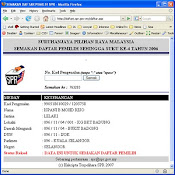















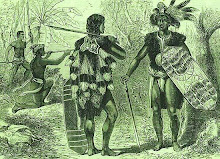





















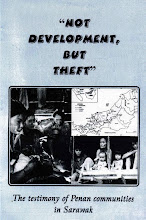
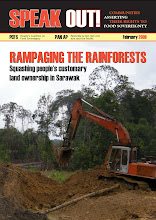









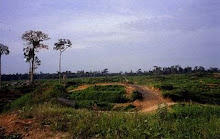

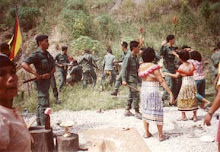





















1 comment:
Yes, the robbery was great.
Sarawak and Sabah are nothing in the West Malaysians' eye other than a big pot of gold for them to extract at their own convenience.
Mahathir is a mediocre in class but a great cheat and a liar. He assumes himself a constitutional Malay and then using draconian tactics to wrestle power and dictatorial means to push out his enemies and achieve his aims.
Greed in him has no boundary and he even uses negotiated tenders to award to his cronies and children so that he could get the maximum benefit from his awards.
Those Bakun forest raped by him and his crony TPK, all the contracts TPK had on his behalf are all from Sarawak from our land. These coupled with those he got from WM and Sabah all make him to be US$44.0 billions or RM$135.0 billions rich and we are hanging here high and dry many are without jobs and have difficulties to make ends meet.
Diam, his cohort, supposed to own more that 10 banks and tremendous properties. Mind you, he was a bankrupt not so long ago!
Recently, they even play up religion and race issues again in the West all stack against us here.
50 years ago KL was like Kuching. Today, you can see the vast difference in development and living standard between us.
They are not interested in us from the East. We should have seen their motives through and through.
Question is, what are we going to do? How can we free ourselves from the flanges of deceits and robbery of such bandits who have usurped and robbed us our rights to develop and be rich?
You are the natives and rightful owner of this land. Do you know how much they have taken out of your Bintulu gas? Or petroleum $ from the State? They will not let you know as they want to make you ignorant so that they could rob and rob and rob until you run dry and fall flat and bankrupt.
Sad. Very sad.
Somebody has to rise up and wrestle all our dues back to us.
The road will not be smooth as inland natives all fell to money politics, cheats and threats during election.
You have to make them realize their short-term follies and rise up to put themselves in command of their own destiny well before GE14.
Good Luck.
Post a Comment